Nine out of ten MIMAROPANs are basically literate
The MIMAROPA Region has a basic literacy rate of 87.2 percent or nine (9) out of ten (10) individuals are basically literate. This percentage reflects the proportion of the population aged five years and over who can read and write a simple message in any language or dialect with understanding, and to compute basic arithmetic. Among the regions in the Philippines, MIMAROPA falls within the lower range of literacy rates.
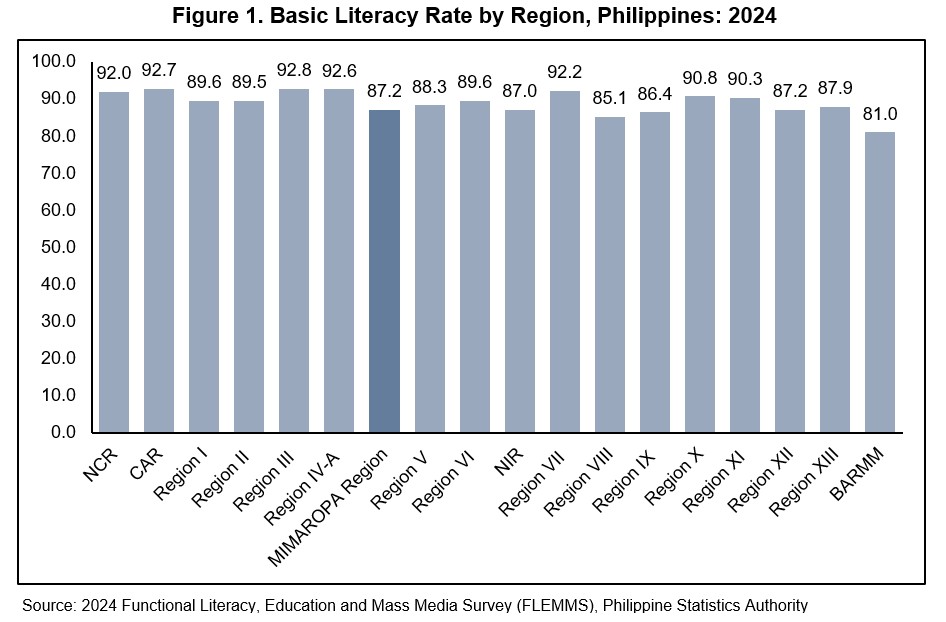
The MIMAROPA Region shares the same literacy rate as Region XII and ranks just slightly above NIR (87.0%).
Among the regions in Luzon, MIMAROPA Region lags Region III (92.8%), CAR (92.7%), both of which are among the highest in the country. It also falls short of the average literacy rates seen in Region IV-A (92.6%), NCR (92.0%), Region I (89.6%), Region II (89.5%), and Region V (88.3%).
Meanwhile, as compared to the regions in Visayas, MIMAROPA Region’s basic literacy rate is slightly higher than that of NIR (87.0%) and Region VIII (85.1%) but lower than Region VI (89.6%) and Region VII (92.2%).
In addition, MIMAROPA Region has similar basic literacy rate with Region XII (87.2%), higher basic literacy rate than Region IX (86.4%) and BARMM (81.0%), and lower basic literacy rate than Region X (90.8%), Region XI (90.3%), and Region XIII (87.9%).
Female basic literacy rate was higher than that of males
The MIMAROPA Region, composed of five provinces and one highly urbanized city, reported a combined population of 2.94 million persons aged five (5) years and over in 2024 wherein 2.56 million persons are classified as basically literate. In addition, the female basic literacy rate was higher at 88.8 percent, compared to 85.6 percent for males.
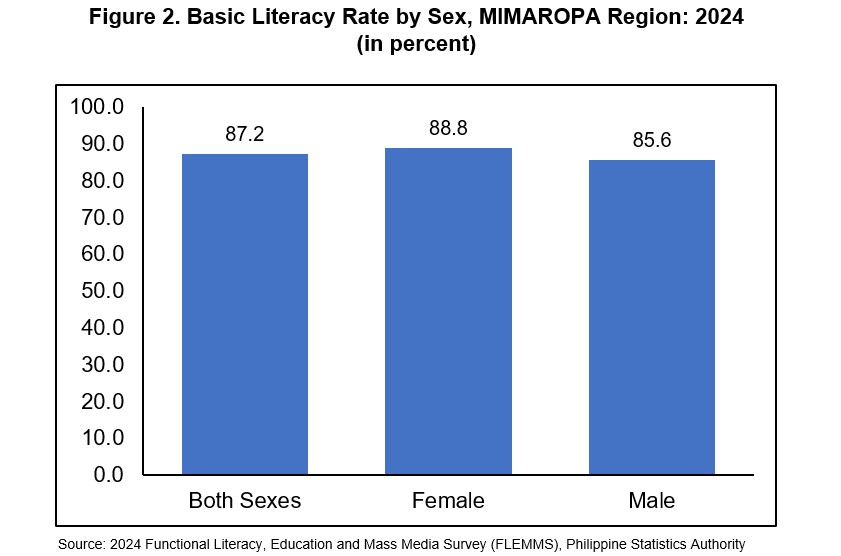
Romblon registered the highest literacy rate at 94.6 percent
Among provinces in the region, Romblon achieved the highest literacy rate, with 94.6 percent of its population being basically literate. The City of Puerto Princesa follows closely with 94.2 percent. In contrast, Oriental Mindoro recorded the lowest rate at 84.2 percent. Across all provinces, females consistently show higher literacy rates than males.
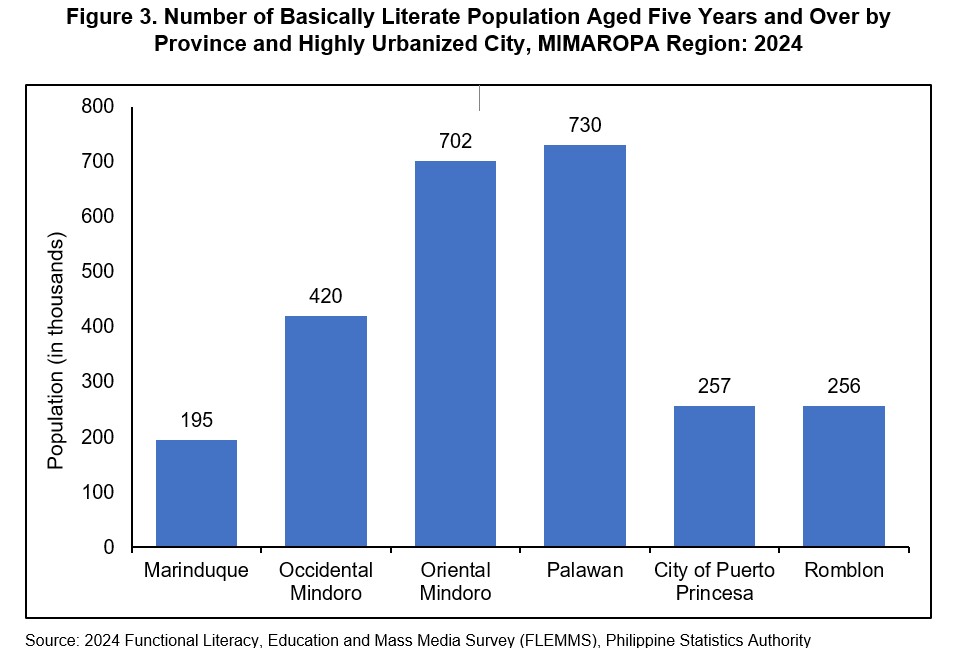
The 2024 FLEMMS data for the MIMAROPA Region presents a clear correlation between educational attainment and literacy rates, revealing distinct trends in how higher levels of education significantly improve literacy.
Individuals who have completed college or higher education exhibit a basic literacy rate of
98.5 percent. Following closely are those who have completed post-secondary non-tertiary and short-cycle tertiary education, with literacy rates of 97.1 percent and 96.7 percent, respectively.
Meanwhile, individuals with high school education shows a literacy rate of 95.3 percent. Basic literacy rate for elementary is at 80.4 percent. As for individuals with no formal grade completed or only early childhood education, the basic literacy rate is at 45.0 percent.
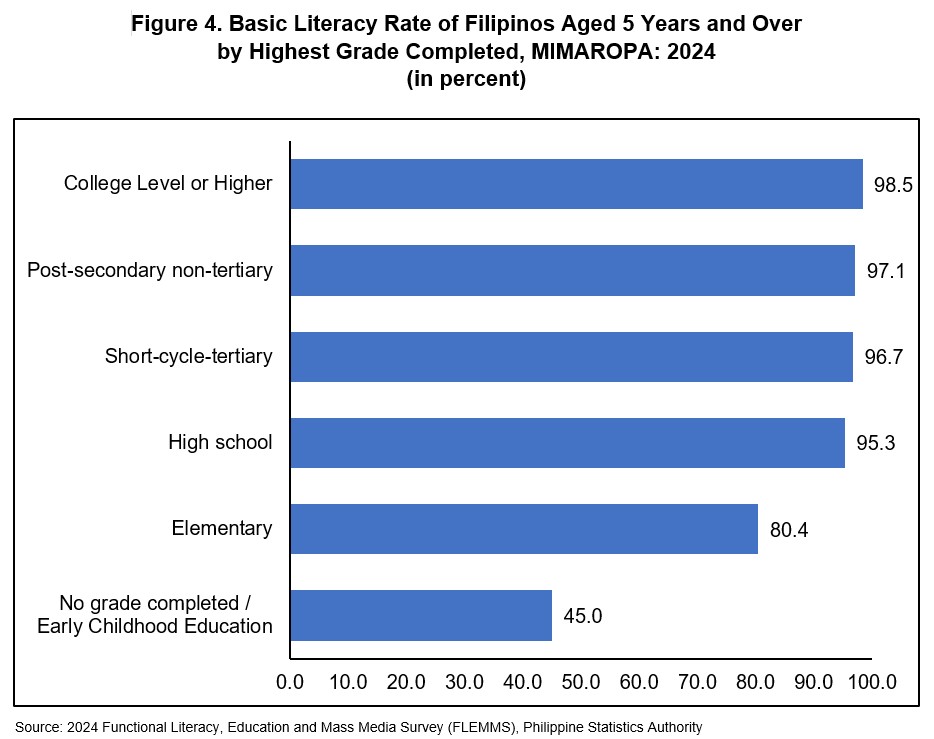
Generally, the basic literacy across age groups in the MIMAROPA region shows that basic literacy rates generally increase with age during school years, peak in young adulthood, and then decline gradually in older age groups.
Children aged 5 to 9 years have the lowest basic literacy rate at 75.7 percent, reflecting their ongoing early learning development. This rate improves in the 10 to 14 years group, reaching 86.9 percent, and continues to rise through adolescence and young adulthood.
The highest literacy rates are observed among individuals aged 15 to 24, with peaks at 95.5 percent in the 15 to 19 group and 94.8 percent in the 20 to 24 group.
However, there is a gradual decline in literacy among the older population. Individuals aged 30 to 39 still maintain a high rate at 91.5 percent, but this drops further in
the 50 to 59 age group (85.5%) and reaches the lowest level among the elderly (aged 60 and over) at 73.8 percent.
Across all age brackets, females consistently report higher literacy rates than males, reinforcing the pattern observed at the provincial level.
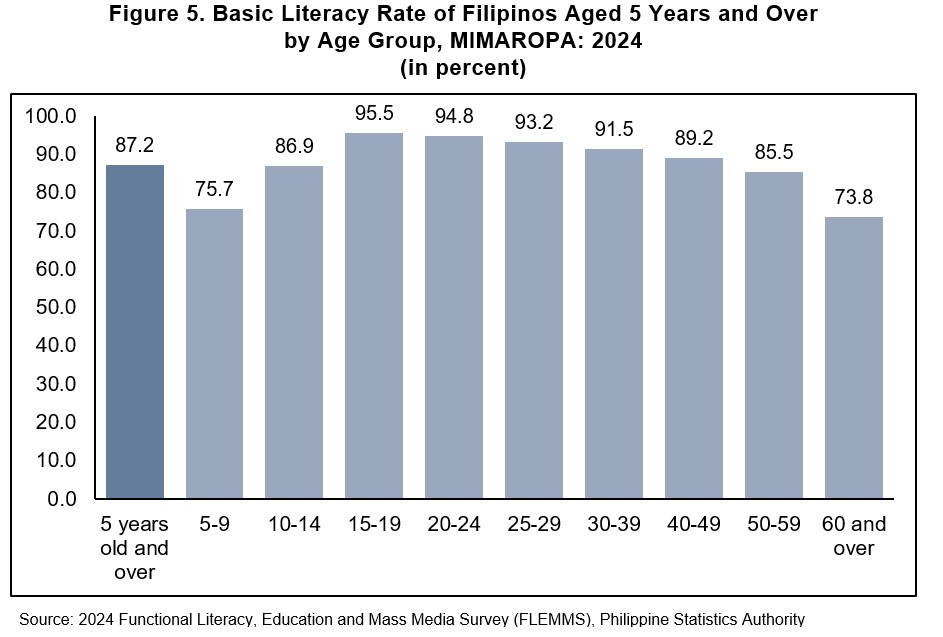
(SGD) LENI R. RIOFLORIDO
Regional Director
MLLM / OHG / TJMDM

